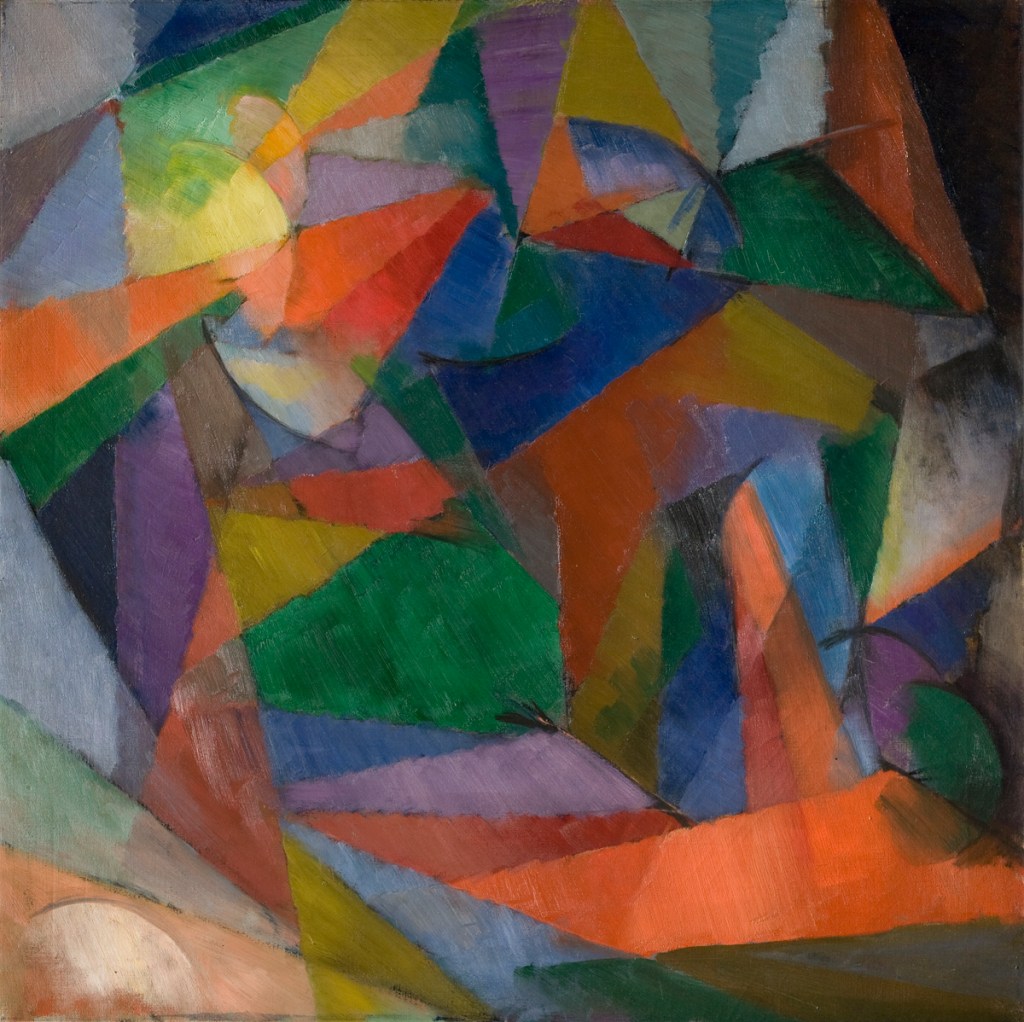
Synchromy #3, 1915-1916
Oil on canvas, 24 1/8 x 24 1/8 inches
1978.21.65
ABOUT THE ART
Stanton Macdonald-Wright was a pioneer of a movement called Synchromy, a form of abstraction that looked at the world in relation to color. Following Synchromist exhibitions with Morgan Russell in 1913, Macdonald-Wright eliminated literal subject matter from his painting altogether. In Synchromy #3 he liberated color from its traditional descriptive role and let it be both subject and theme of the painting. In this square format, the artist achieved evenness, balance, and control by organizing the color patches around a central vortex and extending them to the edges of the canvas so they seem to continue into space. The interaction of the color wedges creates spatial depth and a circular movement expressive of the expanding universe. Macdonald-Wright envisioned his paintings as tonal harmonies and constructed them with color chords composed from a twelve-tone color scale in which each color was a fixed note. Refrains of light and color produced the rhythm.
ABOUT THE ARTIST
Born in Charlottesville, Virginia, in 1890, Stanton Macdonald-Wright moved to California at age eleven. He went to Paris in 1907; his studies there led him to optical theories and color technology, which influenced the development of a new stylistic approach called “Synchromy.” This movement was interested in producing form through color and combined optical science and color theory with fine art, purporting that each color changes depending on the colors that surround it. It was also based on “Synesthesia,” a disorder that crosses sense perception (those with Synesthesia might “taste” or “hear” color). For Macdonald-Wright, Synchromy allowed a viewer to tap into this phenomenon, and he believed that color tone in his painting conveyed unique musical tones and suggested mood, depth, and resonance to affect the subconscious.